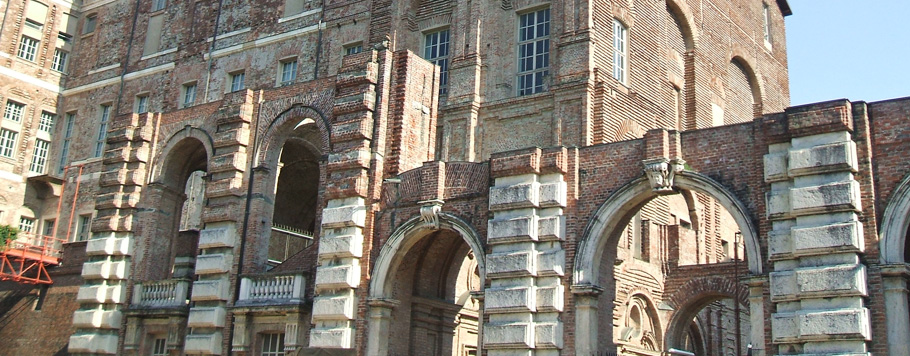 un progetto di
un progetto di 
Il Castello di Rivoli, è stato costruito sui resti di un castello dell'epoca medioevale esattamente del secolo XI. Proprietà dei Vescovi di Torino, passò ai Savoia nel 1247 e a loro rimarrà fino al 1883 quando verrà venduto al comune. Quando Emanuele Filiberto scelse Torino come nuova capitale del Ducato, stabilì qui la famiglia e la corte. Carlo Emanuele I, nel '600, volle edificare a Rivoli un grande palazzo di piacere: il cantiere verrà completato nel 1670. Vent’anni dopo l’edificio venne fatto bruciare dai francesi e il duca Vittorio Amedeo II decise di ricostruire quella residenza rendendola ancora più bella; qui egli annuncerà la sua salita al trono, la sua abdicazione e la sua prigionia. Dopo la guerra Rivoli risorge prima con i progetti dell’architetto Garove e poi con quelli di Juvarra; in realtà non si potrà mai apprezzare il risultato finale dei lavori, perché essi vennero interrotti proprio per le vicende accadute al re. Altri interventi, pur se scarsi e insufficienti, furono poi eseguiti nel 1793 nel tentativo di terminare il progetto di Juvarra; nel periodo napoleonico il Castello verrà chiuso e poi donato a un maresciallo. Tornato nelle mani dei Savoia, il Castello venne venduto al comune di Rivoli che lo usò come alloggio per le guarnigioni militari; questo comportò la perdita di gran parte dell'arredo per le devastazioni e i danneggiamenti militari e i vari incendi. Dopo la Seconda Guerra Mondiale iniziarono i restauri, che si fermarono e ripresero più volte fino a quelli decisivi degli anni ’80 che, mantenendo l’impianto originario, disposero l’attuale Museo d’Arte Contemporanea con la collezione Panza di Biumo.
The Rivoli Castle was built on the ruins of a medieval castle precisely of the 11th Century; it was the property of the bishops of Turin and then in 1247 it came under the ownership of the Savoia until 1883, when was bought by the government. When Emanuele Filiberto chose Turin as the new capital of the dukedome, he established there his family and the court. In the XVII century Charles Emanuele I built a big palace of pleasure in Rivoli: the building site was finished in 1670. After twenty years the building was burnt by the French and the duke Vittorio Amedeo II decided to rebuild that residence making it even more beautiful; here he announced his rise to the throne, his abdication and his imprisonment. After the war, Rivoli rose again thanks the projects of the architect Garove and Juvarra. Actually, the results of the works have never been appreciated because they were interrupted after the incidents happened to the king.
Further works, few and inefficient, were then carried out in 1793, in order to finish Juvarra’ project. During the period of Napoleone, the castle was closed and gave to a marshal. When the castle came again under the ownership of the Savoia, it was bought by Rivoli’s government which used it to house the army and due to this fact and to a fire it lost its authentic furniture.
After the II world war started the restoration works which stopped and restarted several times until the final one in the XIX century which set the Contemporary museum of art with the collection Panza of Biumo as the original set.
Contatti
Castello di Rivoli
Piazza Mafalda di Savoia
10098 Rivoli (TO)
Informazioni generali
E-mail: a.odenato@castellodirivoli.org
Web: castellodirivoli.org